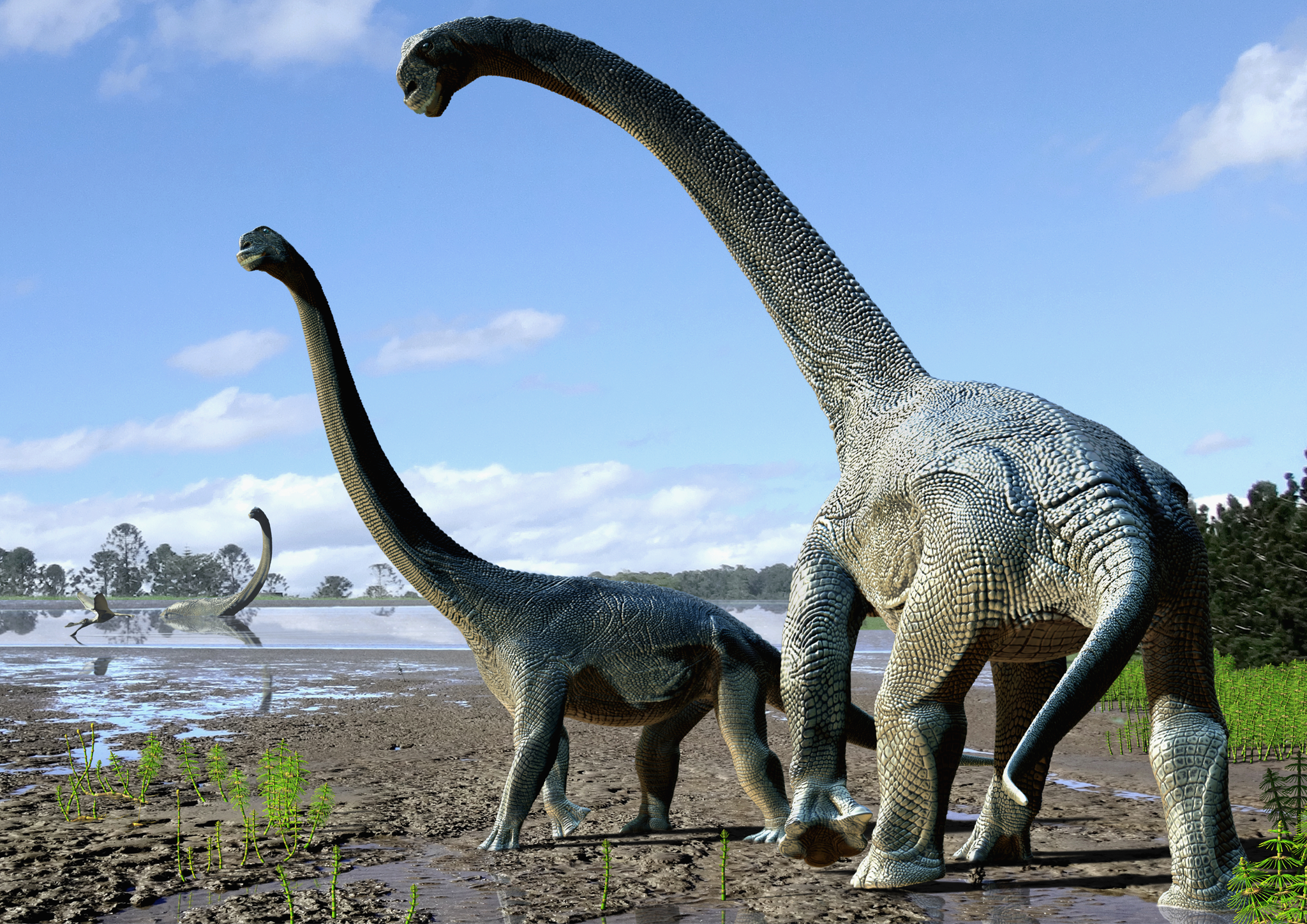
Two news articles this week appeared like bookends of the same problem. One concerned the superiority of a world where nutrients cycle through gigantic animals, like the extinct Titanosaurs, pictured above– or Elephants who are now dying at an alarming rate. The other story was a report of the 75% decline of flying insects since 1989. Small and large going fast — leaving what? The middle?
It surprised me that big animals improve the ecological health of the Earth’s air and soil significantly better than medium-sized or small animals. They eat more plants and make more manure. A Northern Arizona University study found that nutrients that make rich soil are locked up, “until they are liberated for use through animal consumption, digestion and defecation,” Big is better apparently. link
We have all seen the depictions of the dinosaur-dominated world full of huge lush plants. The largest land animals ever were the Titanosaurs above, 122-feet long and with a weight up 138,000 pounds. Along with their fellow dinosaurs, they created a cycle of abundance. In their world elements like phosophorus quickly reentered the soil and plants grew faster. In our world, elephants, for example, “only” weigh about 13,000 pounds but still contribute significantly to folding the plant world into the soil–fast. Bison are another example, they created at least two feet of rich topsoil across our American prairies.
But the dinosaurs are all gone (and thank heaven it’s not our fault); elephants, rhinos, moose, polar bears, bison are all in a steep decline. The cycling of plant to soil and back to plant is down 92% due to the reduction in the numbers of very large animals.
In my little world, deer and other small creatures populate undeveloped areas here in Texas hill country but the rocky hillsides are not lush; there is no abundance there. Nevertheless, the deer cause havoc for gardeners. Imagine fencing that would keep out bison or elephants or — dinosaurs. Without the giants, my life is safer and more comfortable.
The disappearance of high numbers of flying insects confronts us with the same choice of human well being versus ecological well being. A European study of 63 nature reserves found the biomass of flying insects declined by 75% in the past 27 years. And the decline was measured on areas set aside to preserve wildlife, including insects. It’s got to be worse in agricultural areas or in cities. Insect scientists worry that these finding indicate continental and/or global slide; and they think continued decline of flying insects will a bad, bad thing. link
Apparently I am seeing only a quarter was what was flying around in the late 1980’s. That is a lot of bees, lightening bugs, dragonflies and butterflies–gone. Of course this means that flies and mosquitoes and other ‘pests’ have declined as well, making my world safer and more comfortable.
The very large and the very small– going or gone; we sit comfortable and safe in the center.
